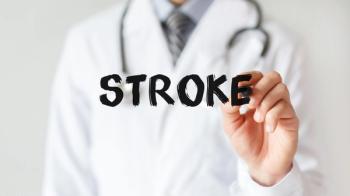
- Vol 32 No 1
- Volume 32
- Issue 1
Depression, Daughters, and Cellular Aging
Can we predict risk for depression? There are no genetic tests or imaging tests that can be used to predict individual risk. But a longitudinal study at Stanford University is worth watching.
Depression is prevalent-
Can we predict risk for depression? There are no genetic tests or imaging tests that can be used to predict individual risk. But a longitudinal study from
This study has followed healthy (with no psychiatric diagnosis) daughters of mothers who have had multiple episodes of depression and a matched sample of healthy daughters of never depressed mothers. Although the high-risk daughters-those whose mothers have depression-showed no signs or symptoms of depression when they were first evaluated between ages 10 and 14, Gotlib notes that depression developed in 60% by age 18. In a paper recently published in Molecular Psychiatry,
How could healthy 10- to14-year-old girls show signs of aging? The answer is not entirely clear, but a second observation may provide an explanation. The same girls with shortened telomeres had increased stress reactivity, indicated by a steeper spike in the hormone cortisol in response to a simple stress test. Does the heightened stress reactivity lead to shorter telomeres? While there is an abundant literature linking developmental stress to risk of depression, we don’t know if stress reactivity is the mechanism for apparent cellular aging or if both stress reactivity and cellular aging reflect some other underlying process.
Beyond suggesting a risk biomarker for early identification of depression, this finding indicates a troubling early sign of risk for premature biological aging and possibly age-related chronic diseases, such as cardiovascular disease. Investigating the cause and timing of decreased telomere length-to what extent it may result from abnormalities in stress responses or is genetically influenced, for example-will be important for understanding the relationship between cellular aging, depression, and other medical conditions.
What can be done to reduce the risk of depression? In previous experiments, girls at risk for depression exhibited different patterns of brain activation during experimental mood regulation. In ongoing experiments, the Gotlib team is using neurofeedback to help these girls retrain their brain circuits and hopefully their stress responses. It will be a few years before we will know how much this intervention reduces risk of depression, but anything that prevents or slows the telomere shortening may be an early indication of success.
[Editor’s note: This article, originally posted on October 23, 2014, is published here courtesy of the NIMH.
Disclosures:
Dr Insel is Director of the National Institute of Mental Health.
References:
1. US Department of Health and Human Services, Substance Abuse and Mental Health Services Administration. Results From the 2012 National Survey on Drug Use and Health: Mental Health Detailed Tables. http://www.samhsa.gov/data/sites/default/files/2k12MH_DetTbls/2k12MH_DetTbls/HTML/NSDUH- MHDetTabsTOC2012.htm. Accessed October 23, 2014.
2. US Burden of Disease Collaborators. The state of US health, 1990-2010: burden of diseases, injuries, and risk factors. JAMA. 2013;310:591-608.
3. Nordentoft M, Mortensen PB, Pedersen CB. Absolute risk of suicide after first hospital contact in mental disorder. Arch Gen Psychiatry. 2011;68:1058-1064.
4. Gotlib IH, LeMoult J, Colich NL, et al. Telomere length and cortisol reactivity in children of depressed mothers. Mol Psychiatry. 2014 Sep 30. doi:10.1038/mp.2014.119; [Epub ahead of print].
Articles in this issue
almost 11 years ago
Does TMS Hold Promise for Generalized Anxiety Disorder?almost 11 years ago
Managing Anxiety in the Medically Illalmost 11 years ago
Mental Health Benefits of Exercise in Childrenalmost 11 years ago
Gone Girl by Gillian Flynnalmost 11 years ago
How to Fix the Broken Mental Health System: Ten Crucial Changesalmost 11 years ago
Brain Stimulation With ECT: Neuroscience Insights From an Old Treatmentalmost 11 years ago
In With the Old, Out With the Newalmost 11 years ago
The Dynamics of Psychosis: Therapeutic Implicationsalmost 11 years ago
A Rational Suicide?Newsletter
Receive trusted psychiatric news, expert analysis, and clinical insights — subscribe today to support your practice and your patients.




